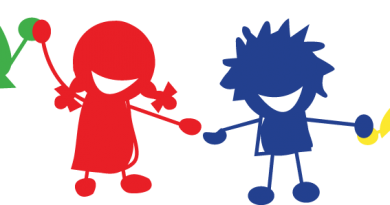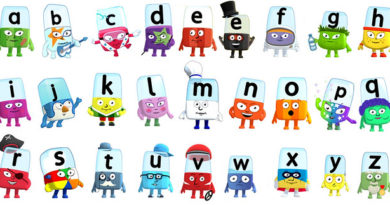GOOD OLD FLASHCARDS GAMES: A BACKWARD GLANCE.
For those English teachers who started working in the late 80s, a tape recorder was at the top of the technological resources we had in those times; and a pile of worn away flashcards would always be a good companion, especially when it came to the short weekly incursions into the infant territory classrooms. It is inevitable to smile with some kind of nostalgia when watching those little faces showing great fun with that simple game; but also interesting to reflect on how good principles always work, even though if they stem from the “bleak” analogue teaching days.
The principles behind this funny rolling chair game have obviously stood the test of time due to its simplicity. Children love having fun, and playing is in their very nature. However, thinking of games as a valuable resource just due to the fun component would not be a good option, since then we would be neglecting another golden rule… All games should entail some kind of linguistic benefit and didactic intention.
Given this, from a methodological viewpoint, the use of flashcards bring about immediate advantages:
- Flashcards can be used at any stage of the lesson, and can be adapted to any activity, whether it deals with mere vocabulary revision or it has a communicative nature. This means that we can use flashcards not only to present or review vocabulary; but also to contextualize more complex activities (i.e. a story, a role-play etc).
- The visual power of flashcards is essential to explain what a new word means or to remember what has already been covered. In this same light, it seems clear that eliciting vocabulary through images has greater motivating power than simply translating them for our students.
- There is a wide range of possibilities when it comes to using flashcards in a FL lesson. Some of them can be: to illustrate presentations of language; to quickly show the meaning of a lexical item; to provide visual support in a story; to elicit vocabulary related to a specific lexical field before starting a lesson; as props for guessing games, definition games, description activities, etc.
- The effectiveness of visuals is commonly acknowledged in FLT and there are countless ways to take advantage of images in the class to make English teaching more effective. In this sense, images help translate the meaning of words, add colour and attractiveness to the lesson, provide contextual elements and usually motivate learners to understand or produce in the FL.
- From a practical perspective, flashcards are easy to find, store and use. Moreover, the internet is an excellent source to search for specific images to be adapted to our lessons (i.e. to support a storytelling activity). Through the internet we can create our own flashcards or present “digital flashcards” in the Interactive White Board.
- Finally, it is worth mentioning that the use of flashcards promotes “intelligent guessing”, particularly when the image does not refer to an object, but to a feeling, state of mood, etc. It is obvious that getting learners to predict before listening to something is motivating. To do so, we can encourage them to guess what they think a text is about using different procedures: showing pictures related to the text, choosing the picture that shows what the characters are going to say, etc.
SOME GAMES WITH FLASHCARDS
As we have seen, flashcards are excellent tools to support understanding in the FL classroom. Therefore, we shall now consider some practical proposals which can be applied with almost any lexical field, level and age of students. These proposals range from simple word learning and practising strategies to more demanding and communicative activities.
We can use flashcards to present new items through simple games like “guess the name”, in which the teacher shows a card and gives three possibilities. A variation of this activity could be showing the card and play hangman to guess the written form.
An adaptation of a popular Spanish game is the “Flash-kerchief”. This game is played in two groups standing in two rows. Each student has an “English nickname”, to be identified. The teacher (in the middle of the two rows) calls out a name and two students run to him. The first one to say the name of the flashcard shown by the teacher keeps the card.
Cops and robbers is an action game in which flashcards are essential elements. Students are organized in two groups of cops and robbers in opposite sides of the class. The teacher places some flashcards nearer to the robbers; the teacher calls out one of the flashcards and nominates a cop and a robber; then the robber has to run and pick up the card before the cop can arrest him/her.
Hop to the card is another engaging game where students are asked to show understanding by carrying out an action. The procedure is very simple: the teacher sticks some flashcards around the classroom and students in groups have to hop to the card corresponding to their group, i.e. group number 2 hop to the plane, group number 3 jump to the bike, etc.
“Memory cards” is a game specially indicated to develop spatial-visual intelligence. This game is played in pairs and we need pair cards related to any topic. The cards are displayed on the table face down. In turns, a student picks two cards and says the names aloud. If they make a pair, he/she can keep them, otherwise they will be placed in its original position
An example of a simple communicative game based on the information gap principle is the “The flash-hats” game. The simple procedure of the game hides essential principles for the development of communicative competence. In this game, each student is equipped with a cardboard hat with a flashcard on top of it; and students are challenged to guess the card on their hats by making basic questions to their classmates (i.e. is it an animal?, is it big?, etc). Once a student has guessed the card, he/she can keep it and the teacher places a new card on the hat. Apart from the fun element and the basic materials for the game (cardboard hats and flashcards), this game takes what may seem a mere practice of familiar vocabulary to real communication with the use of limited language, (i.e. what colour is it? Where does it live? Is it an animal?). Similarly, the game can be graded to different levels and students with specific needs of educational support may be given clues to make questions. However, the most relevant aspect of this game is that it is an example on how we can create a need to communicate and engage students in understanding others and getting their meaning across by devising a joyful communicative purpose.
It is very likely that the main reason to use flashcards in the FL classroom is that children seem to take more interest in guessing out of images, instead of merely listening to what a word means. This principle of involvement and participation is central to modern FLT, in which students must be active participants who learn English within practical situations and with the aim of communicating.
We cannot bring this article to an end, without stressing the role of the teacher, like the one who enjoys himself in this video with his students by adding the “magic” of a rolling chair. Make new friends, but keep the old, one is silver, but the other is gold”, goes the saying. It seems clear that the new generations of English teachers, who have the responsibility of being the most competent in our history, can take great advantage of the digital world of resources. Nevertheless, it is indispensable to consider that those resources will always be enhanced in a pleasant classroom environment, where children feel that playing and fun are part of English learning.
Video by: English Teaching Games.




